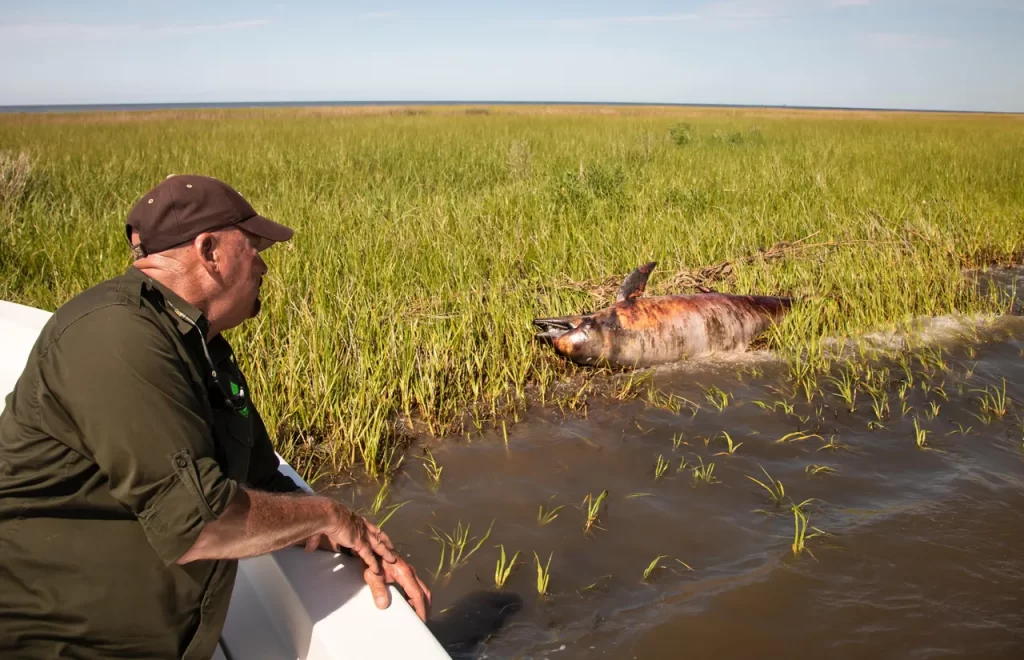
Barataria Bay is a marshy jewel in the heart of the vast Louisiana bayou. Its unparalleled natural ecosystem was once a hideout for smugglers and malcontents like Jean Lafitte, who ruled the labyrinth of marshlands and estuaries. By the early 20th century, oil and gas had taken over the marshlands, and levees reined in the mighty Mississippi River and redirected it toward the Gulf of Mexico.
Now, pipelines and canals crisscross the bayou, but the 15-mile Barataria Bay that runs along the Mississippi River remains one of America’s richest fishing grounds, with an abundant assortment of shrimp, crab, oysters and commercial seafood that’s a big part of the state’s $2.4 billion fishing industry today.
As the fisheries expanded, Mississippi River levees constructed in the early 1900s stemmed the flow of natural land-building river sediment into the bay. The levees, along with oil development and sea-level rise due to climate change, contribute to one of the greatest land-loss rates on the planet: Land in Barataria Bay is disappearing under the rising tides at the rate of a football field every 100 minutes.
Barataria Bay is also at the center of one of the biggest natural construction projects in history — a $50 billion plan to reverse this land loss that has pitted powerful state agencies and national environmental organizations against commercial fishing groups and independent marine mammal scientists worried about impacts on fisheries and wildlife.
Stuck in the middle of this fight are two major populations of northern Gulf bottlenose dolphins.
The dolphins long flourished in the brackish waters of Barataria Bay and the Mississippi Sound. But the changing climate, pollution, and a flood of diverted Mississippi River water, which reduces salinity and increases nutrients, now imperil them. Last year, a record-setting torrent of river water led to a toxic algal bloom that left ocean waters in Mississippi off-limits for months last summer and were linked to painful, often deadly skin lesions on the dolphins.
This week, federal officials closed their investigation of the more than 330 dolphin deaths last year, connecting the animals’ demise to low salinity levels caused by record flooding that poured trillions of gallons of nutrient-rich fresh river water into the Mississippi Sound and other coastal regions. Scientists say it’s likely to be a recurring nightmare as climate change increases rainfall and flooding along the Mississippi River and in the upper Midwest.
Read the rest of the article on HuffPost